Tuesday, September 18th 2018

ASUS Launches its ROG Ryujin Line of AIO Liquid CPU Coolers for AMD TR4
ASUS today launched the Republic of Gamers (ROG) Ryujin line of all-in-one liquid CPU coolers for AMD Ryzen Threadripper processors. Positioned above the ROG Ryuo series, which opened to pre-orders earlier this month, the Ryujin was first showcased at the 2018 Computex. These coolers are characterized by a somewhat square pump-block design that resembles a that of a chipset heatsink; but is embedded with a 1.77-inch color OLED display that shows an animated ROG logo by default, but can be reprogrammed to show just about anything, such as clan logos, live CPU temperature/load monitoring, etc. Another innovation that sets the Ryujin pump-block apart from every other Asetek cooler out there, is a tiny lateral-blower fan embedded into the block, which ASUS claims can bring down CPU VRM and M.2 SSD temperatures by up to 20°C.
The Ryujin series comes in two variants based on radiator size, the Ryujin 240 (120 mm x 240 mm radiator), and Ryujin 360 (120 mm x 360 mm radiator). These are 27 mm-thick aluminium radiators, which are ventilated by matte-black Noctua IndustrialPPC 120 mm PWM fans that are part of the package. These fans each spin between 450 to 2,000 RPM, pushing up to 121.8 CFM of air, with noise output up to 31 dBA. As we mentioned earlier, the product pages for both models mentions that the coolers only support AMD socket TR4, with full coverage for the AMD Ryzen Threadripper integrated heatspreader. This could help ASUS command a slightly high price, given that it's catering only to the market that can afford HEDT processors.
The Ryujin series comes in two variants based on radiator size, the Ryujin 240 (120 mm x 240 mm radiator), and Ryujin 360 (120 mm x 360 mm radiator). These are 27 mm-thick aluminium radiators, which are ventilated by matte-black Noctua IndustrialPPC 120 mm PWM fans that are part of the package. These fans each spin between 450 to 2,000 RPM, pushing up to 121.8 CFM of air, with noise output up to 31 dBA. As we mentioned earlier, the product pages for both models mentions that the coolers only support AMD socket TR4, with full coverage for the AMD Ryzen Threadripper integrated heatspreader. This could help ASUS command a slightly high price, given that it's catering only to the market that can afford HEDT processors.
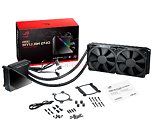
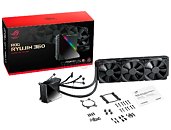
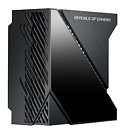
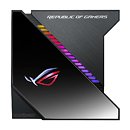
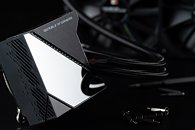
28 Comments on ASUS Launches its ROG Ryujin Line of AIO Liquid CPU Coolers for AMD TR4
need..
moar....
R.G.B......
eVeRyWhErE.........
nOt :D
I think it looks tacky AF.
The ROG Logo
The first version of the ROG logo was a cubed letter G, denoting the great depth and many facets of gaming. This morphed into the mask logo, as part of a major brand overhaul in 2008. It now includes the new red cloak motif, which debuted together with the Rampage II Extreme motherboard.
rog.asus.com/about-rog/
www.asus.com/uk/Cooling/ROG-RYUJIN-360/specifications/
I'm blowing 2x140mm fans through my 280mm radiator directly into my case Which does increase my temps but it's <1c.
I have 3x120mm exhaust fans plus the PSU.
In the end it really doesn't effect anything other than looks and it looks quiet nice with Ring/Halo fans..just sayin.
I got an h70 years and years ago, and have used it on a 1366 system, 775 system, and two 1155 systems. And 1155 isn't even an option on my bracket. 1156 is. It works because the mounting holes, at least, have not changed since Socket 1156 (I'm assuming the 1366 holes are probably compatible with even the latest 2066 systems, as well).
Aside from that, you have varying layouts of board circuitry that also needs cooling. You can't cool just the GPU die, there are memory chips and VRMs and such that need to be accounted for. These layouts, too, will change, so you can't just design an AIO that will work well for years across generations.
You also can't (usually) just set your card to whatever you want and see if it works or not. My 2600k is fully unlocked. If I want to, I can go try to boot at 5GHz right now... can't do the same with graphics cards anymore. GPU Boost has removed that capability in return for "automatic overclocking", which, in reality, is a set of protections instilled in the card. You are constrained by power, temp, voltage and probably other limits, and you're given a lowball base/boost clock spec, and then told by nVidia: "hey, we're overclocking your card for you, it'll probably (not guaranteed) be fast). The way I see it, it's a set of limitations covered by a smokescreen of "automatic overclocking" up to what the clocks ought to be in the first place. They don't even have to guarantee a real high clock speed this way; they can just give you, as I said before, a lowball spec and laugh as you are amazed by sysinfo reporting utilities showing your actual speed way past that.
Phew, that last bit turned into a bit of a rant... I must be more cynical than usual today. Anyway, the point was that graphics cards aren't as controllable as (at least some) processors are, so there's little point in monster cooling when you can't go past the limits of GPU Boost anyway.